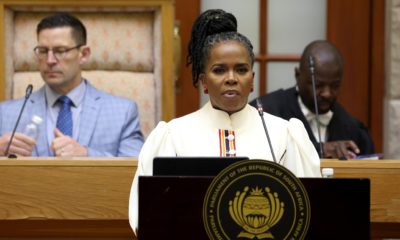News
Business Bodies Rush to Court to Block Controversial Employment Equity Quotas

New EE laws spark urgent legal action, with claims of constitutional violations, flawed processes and looming economic damage.
South Africa’s business sector is pushing back hard against the government’s newly enacted Employment Equity Amendment Act (EEAA), filing an urgent court application this week to stop the rollout of sector-wide race and gender quotas that some are calling “impossible, irrational and harmful.”
The joint application by Sakeliga and the National Employers Association of SA (Neasa), submitted to the Gauteng High Court, argues that the quotas are both procedurally flawed and unconstitutional, and risk plunging businesses into legal and financial uncertainty.
“This filing marks the next important step in preventing these impossible, irrational, and harmful employment quotas,” said Neasa CEO Gerhard Papenfus.
What the new law does
The EEAA, signed into law in January 2025, sets out hiring targets across 18 economic sectors, including mining, agriculture, construction and finance. It applies to all companies with 50 or more employees, compelling them to align their workforce with national race and gender demographics, or face penalties and sanctions.
The law defines “designated groups” as black people, women, and people with disabilities, in line with the Department of Labour’s long-standing goal to correct historical workplace inequalities. But critics argue that the law’s implementation has ignored constitutional safeguards, overlooked proper consultation, and failed to factor in real-world business conditions.
What business groups say went wrong
In court papers, Sakeliga and Neasa laid out a long list of complaints, including:
-
Lack of proper consultation: The Department of Labour held brief 90-minute webinars, each with just 15 minutes for questions, limited to 1,000 attendees. Key industry players were allegedly excluded from meaningful engagement.
-
Arbitrary quotas: Critics say the minister set rigid, “one-size-fits-all” quotas without considering sector-specific realities, such as skill shortages, geographic demographics, or gender representation gaps in industries like construction or engineering.
-
Failure to assess impact: No socio-economic impact study was done to gauge how the regulations would affect businesses, jobs, or investment.
-
Procedural flaws: The 18 sectors were not properly gazetted as required by law, and the final quotas published in April 2025 deviated significantly from earlier drafts without renewed public comment.
-
Constitutional conflict: The quotas are being challenged under principles of non-racialism, equality before the law, and fair administrative action, all enshrined in South Africa’s Constitution.
A bigger political and legal storm brews
This legal challenge is part of a growing storm around employment equity policy. The Democratic Alliance, Solidarity, and other private sector voices have also condemned the EEAA, with some warning it could scare off investors, especially if foreign businesses are required to comply.
Papenfus, who recently returned from a delegation to the US White House, said that among the conditions set out for normalising diplomatic and trade relations were the exclusion of US companies from BEE policies, and clear action against racial rhetoric and land expropriation without compensation.
Meanwhile, a separate legal challenge has been filed by Norton Rose Fulbright, taking aim at the Legal Sector Code, which mandates 50% black ownership and executive control in law firms within five years. The firm says this is unrealistic and unlawful, noting that only 38% of legal professionals were black in 2023.
Government insists transformation is non-negotiable
The Department of Employment and Labour has defended the quotas as a necessary step toward workplace transformation, decades after apartheid, many industries remain unrepresentative of South Africa’s demographic make-up.
The department has indicated it will need up to 10,000 new inspectors to monitor compliance with the EEAA.
However, critics say that forcing demographic parity through blanket rules ignores economic reality and creates a compliance nightmare for businesses.
What happens next
This urgent court case represents the first phase of a two-part legal strategy. The current application seeks a judicial review of the quotas based on procedural flaws. If successful, the second phase will go further, challenging the constitutionality of the quotas themselves.
For now, businesses await clarity, but many are already preparing for costly restructuring to avoid falling foul of regulations that could soon be overturned.
In a country still struggling with unemployment and low investor confidence, the outcome of this case could reshape the future of labour law and economic transformation in South Africa.
{Source: Moneyweb}
Follow Joburg ETC on Facebook, Twitter , TikTok and Instagram
For more News in Johannesburg, visit joburgetc.com



























